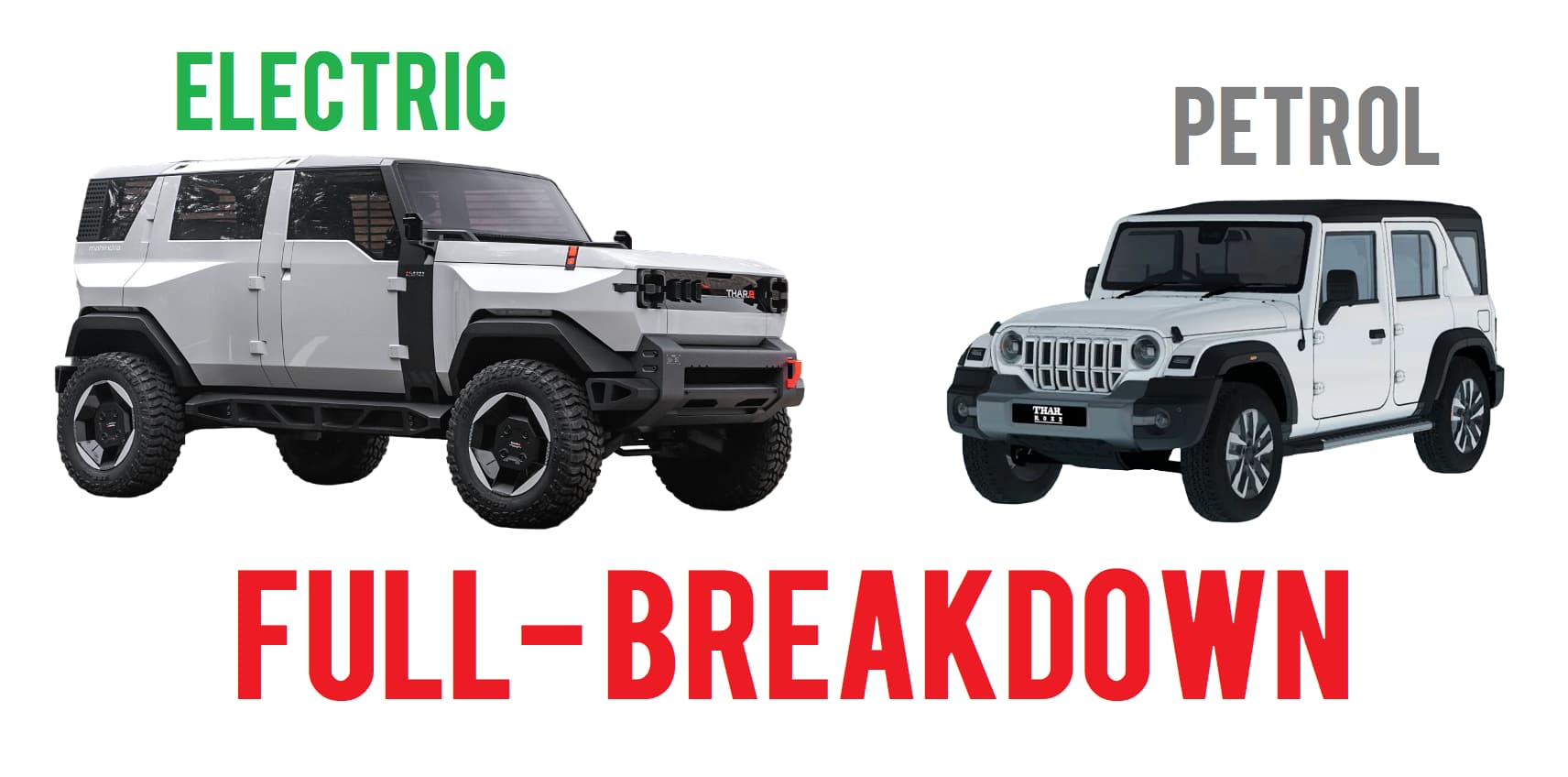When it comes to choosing between electric vehicles (EVs) and traditional internal combustion engine (ICE) cars, there’s a lot to consider. The decision isn’t just about whether to go green or stick with what you know—it’s also about understanding how each option affects your wallet, your driving experience, and the environment. In this guide, we’ll break down the key differences between EVs and ICE vehicles, so you can make an informed decision.
Key Takeaways
- EVs offer lower running and maintenance costs compared to traditional cars.
- Traditional cars often have a lower initial purchase price, making them more accessible.
- EVs are more environmentally friendly with zero tailpipe emissions.
- Government incentives can make EVs more affordable.
Let’s dive into the specifics.
Mileage and Range: How Far Can You Go?
Traditional Cars
When we talk about mileage for traditional vehicles, we’re usually referring to how far they can go on a liter of fuel. Here’s a quick rundown:
- Hatchbacks/Sedans: 15-25 km per liter (petrol) or 20-30 km per liter (diesel).
- SUVs: 10-20 km per liter (petrol) or 15-25 km per liter (diesel).
- Luxury Cars: 8-12 km per liter (petrol) or 12-18 km per liter (diesel).
Electric Vehicles
EVs measure range in kilometers per charge. Unlike traditional cars, the range of an EV can vary widely based on the model and driving conditions.
- Budget EVs: 150-315 km per charge.
- Mid-Range EVs: 250-400 km per charge.
- High-End EVs: 250-500 km per charge.
Bottom Line: Traditional cars often have longer ranges between refueling stops, but EVs are catching up quickly, especially high-end models.
Efficiency: Making the Most Out of What You’ve Got
Traditional Cars
Efficiency in traditional cars depends on how well the engine converts fuel into energy. Unfortunately, a lot of energy is lost in the process.
- Engine Efficiency: Internal combustion engines lose a significant amount of energy as heat, making them less efficient overall.
- Variable Efficiency: Factors like traffic, driving habits, and vehicle type can greatly affect a traditional car’s fuel efficiency.
Electric Vehicles
EVs are generally more efficient because they convert a higher percentage of the energy stored in their batteries directly into power for the wheels.
- Electric Motor Efficiency: EVs typically offer 4-6 km per kWh of battery capacity.
- Consistent Efficiency: EV efficiency is more consistent, especially in stop-and-go traffic, where they can even outperform traditional cars.
Bottom Line: EVs are more efficient, making better use of the energy they consume compared to traditional vehicles.
Running Costs: What’s It Going to Cost You?
Traditional Cars
The running costs of traditional cars are heavily dependent on fuel prices, which can fluctuate.
- Fuel Costs: Higher and dependent on fuel prices and mileage. For example, at a petrol price of ₹110 per liter, it costs ₹1,249.60 to drive 250 km in a Maruti Suzuki Swift.
- Maintenance: Regular maintenance includes oil changes, air filter replacements, and more, adding to the running costs.
Electric Vehicles
EVs are cheaper to run, especially when charged at home with off-peak electricity rates.
- Charging Costs: Lower than fuel costs. Charging a Tata Tigor EV at home, for instance, costs around ₹208 for a full charge.
- Maintenance: Fewer moving parts mean lower maintenance costs. No need for oil changes, fewer issues with the exhaust system, and fewer breakdowns overall.
Bottom Line: EVs are significantly cheaper to run, especially when you consider both fuel and maintenance costs.
Environmental Impact: What’s Your Carbon Footprint?
Traditional Cars
Traditional vehicles have a significant environmental impact, primarily through the emissions they produce.
- Emissions: Contribute to air pollution and greenhouse gases.
- Fuel Production: Extracting and refining fossil fuels also has a considerable environmental toll.
Electric Vehicles
EVs are much cleaner, though their environmental impact depends on how the electricity they use is generated.
- Emissions: Zero tailpipe emissions. However, if your electricity comes from coal, the overall environmental benefit can be reduced.
- Energy Use: Even when considering battery production and disposal, EVs generally have a smaller environmental footprint compared to traditional cars.
Bottom Line: EVs are better for the environment, especially if you charge them using renewable energy sources.
Charging Infrastructure: Can You Charge on the Go?
Traditional Cars
Traditional cars benefit from a well-established network of fuel stations, making refueling quick and easy.
- Fuel Stations: Widely available, so you rarely have to worry about running out of fuel.
Electric Vehicles
While charging infrastructure is growing rapidly, it’s still not as ubiquitous as fuel stations.
- Charging Stations: More are being built, but availability can vary by location. Home charging is a convenient option for many EV owners.
- Charging Time: Charging an EV takes longer than refueling a traditional car, though fast-charging options are becoming more common.
Bottom Line: Traditional cars have the advantage in terms of refueling convenience, but EV charging infrastructure is expanding quickly.
Driving Experience: What’s It Like Behind the Wheel?
Traditional Cars
Driving a traditional car can be an engaging experience, but it also comes with some drawbacks.
- Performance: Varies widely depending on the engine size and type. Expect engine noise, vibration, and varying levels of comfort.
- Experience: Driving a traditional car often involves dealing with gear changes, engine noise, and less responsive acceleration.
Electric Vehicles
EVs offer a different driving experience, often described as smooth and quiet.
- Performance: Instant torque means rapid acceleration, even in budget models. The driving experience is usually smoother and quieter.
- Experience: EVs are often easier to drive, with no need for gear changes and a more consistent power delivery.
Bottom Line: If you value a quiet, smooth ride with instant acceleration, an EV might be the better choice.
Cost Over Time: Which One Saves You More?
Now, let’s compare the costs of owning a budget EV like the Tata Tigor EV and a traditional petrol car like the Maruti Suzuki Swift over five years.
Initial Purchase Price
- Tata Tigor EV: ₹12-13 lakh (before incentives).
- Maruti Suzuki Swift (Petrol): ₹7-8 lakh.
Running Costs (Over 5 Years, 15,000 km/year)
- Tata Tigor EV:
- Charging Cost: ₹0.83 per km × 15,000 km/year × 5 years = ₹62,250.
- Total Running Cost: ₹62,250.
- Maruti Suzuki Swift:
- Fuel Cost: ₹5.00 per km × 15,000 km/year × 5 years = ₹3,75,000.
- Total Running Cost: ₹3,75,000.
Maintenance Costs (Over 5 Years)
- Tata Tigor EV: Approximately ₹37,500.
- Maruti Suzuki Swift: Approximately ₹62,500.
Government Incentives
- Tata Tigor EV: Up to ₹1.5 lakh off under the FAME II scheme and additional state incentives.
Total Cost Over 5 Years
- Tata Tigor EV: ₹11,99,750 (after incentives).
- Maruti Suzuki Swift: ₹11,87,500.
Bottom Line: Over five years, the total cost of owning a Tata Tigor EV is slightly higher than a Maruti Suzuki Swift, but the difference is minimal. Plus, the EV offers lower running costs, lower maintenance, and a smaller environmental footprint.

Conclusion: Which Is Right for You?
Choosing between an EV and a traditional car depends on your priorities. If you’re looking to save on running costs and reduce your environmental impact, an EV might be the way to go. However, if you’re more concerned about the initial purchase price or need the convenience of widespread refueling options, a traditional car could be a better fit.
As technology continues to improve and EV prices continue to fall, the gap between the two is likely to narrow even further. For now, consider your driving habits, budget, and environmental concerns when making your decision.







